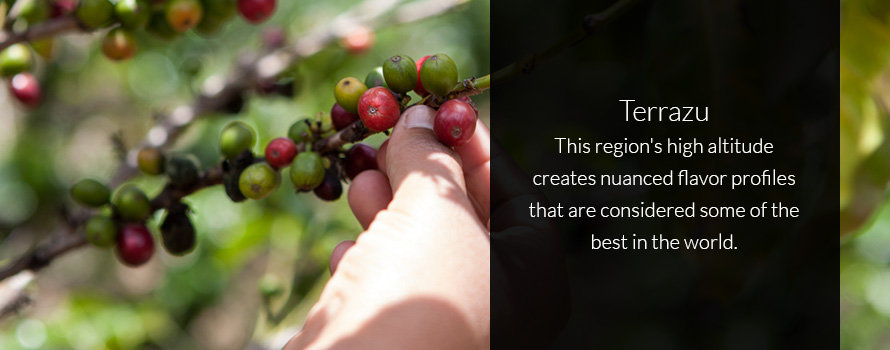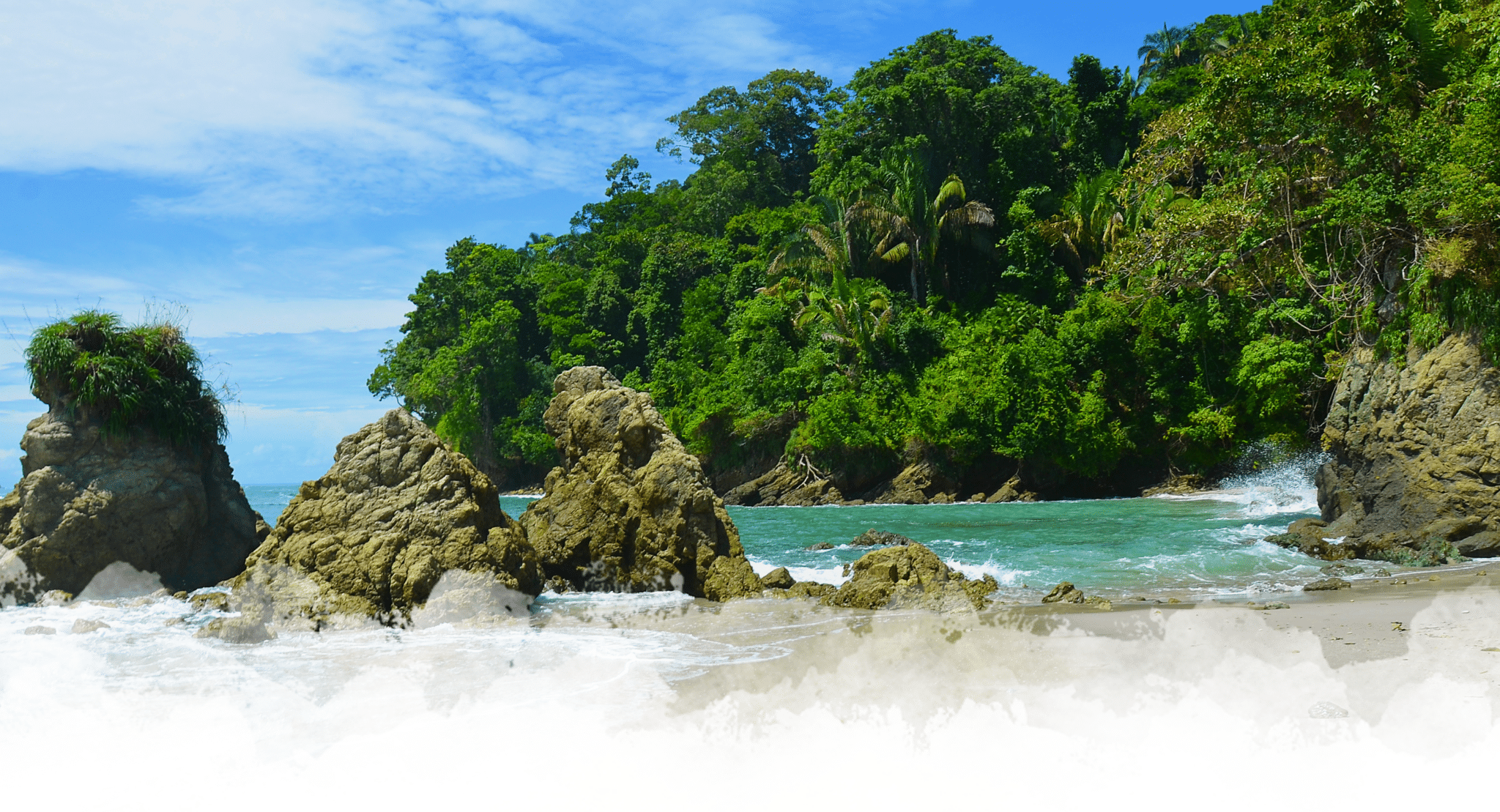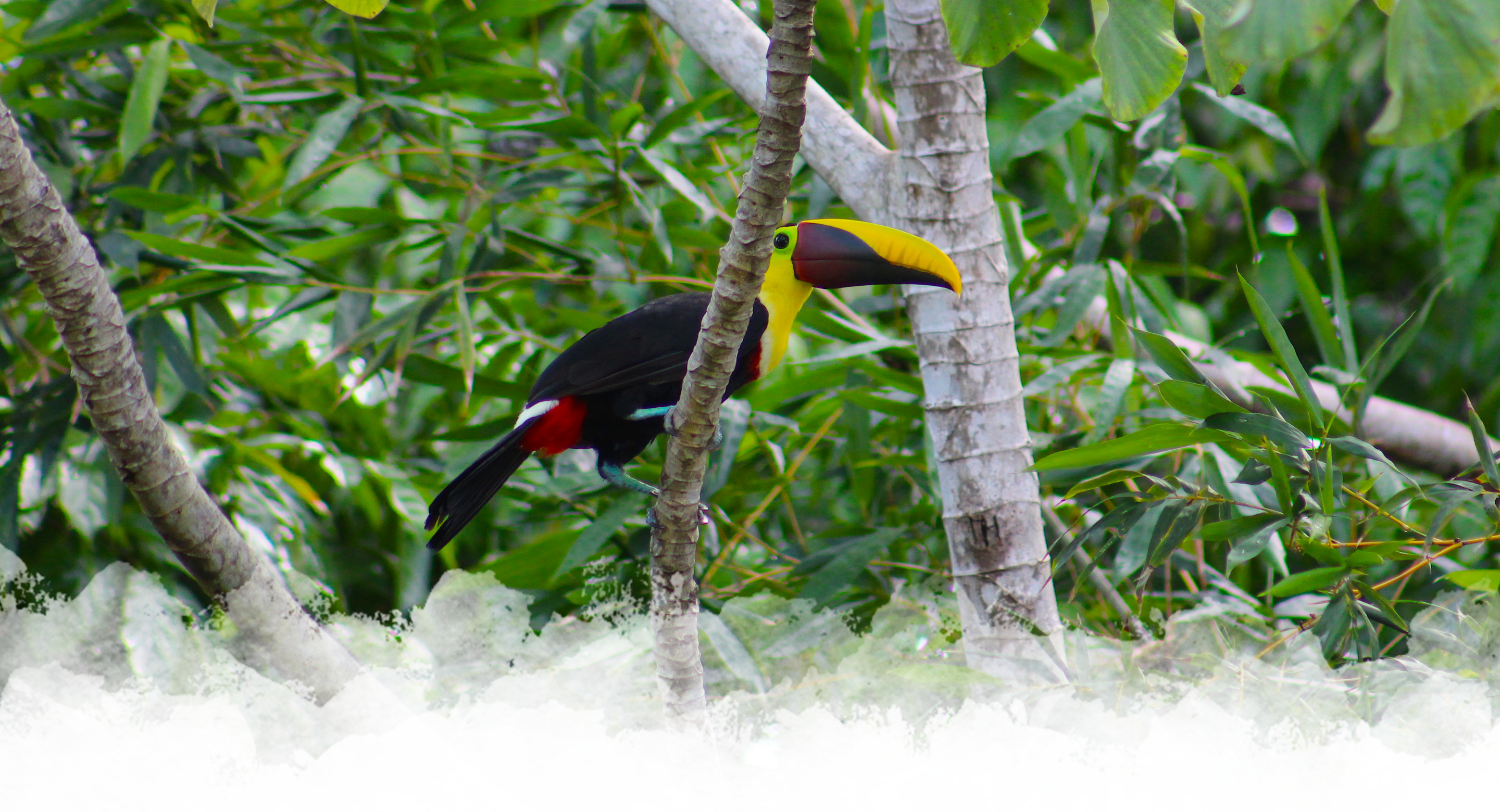About Costa Rica Coffee: The 4 Most Popular Coffee Growing Regions in Costa Rica
As you enjoy your morning coffee or afternoon pick-me-up, do you ever wonder about the origin of the delicious black beverage you’re consuming? It’s no surprise that coffee plays a key role in the Costa Rican economy. Our nutrient-rich soil, climate and topography make Costa Rica a premier location for the best beaches and for growing some of the best coffee in the world.
The History of Costa Rica Coffee
Costa Rica’s relationship with coffee spans hundreds of years. To understand why this plant is so important to the country, let’s briefly examine its history within the tropical mountain ranges of Costa Rica.
Coffee was first introduced in Costa Rica in the 1700s, and the temperate climate and perfect environmental conditions allowed the plant to take root and spread over the mountains quickly. Within a few decades, coffee became one of Costa Rica’s most important exports, cementing itself as an integral element in the country’s economy.
Once Costa Rica achieved independence from Spain and then the Federal Republic of Central America, the nation established itself as a coffee world power. Europe and the United States were the primary importers of Costa Rican coffee, and the earnings helped fund a boom of development within the country.
Coffee became the basis of the economy — and over the years, an important facet of local culture. Coffee drinking acted as a cultural equalizer — something shared and enjoyed by every citizen regardless of occupation or social class. Costa Rica took coffee and turned it into an art, and the beverage is a treasured daily ritual throughout the country.
Today, Costa Rica process its coffee crops using one of three methods — natural, washed or honey.
- Natural: In naturally processed coffee, the mature coffee bean, called a cherry, is dried to separate the pulp from the seed. The natural method produces unique flavor profiles and reduces processing costs.
- Washed: Most coffee crops are processed using the washed technique. In this method, coffee cherries are sent to a wet mill, and high-pressure water strips the pulp away from the seed.
- Honey: Honey processing is a middle ground between natural and washed methods. In honey processing, part of the fruit is initially removed from the coffee beans, and the rest is left to dry and gradually fall away from the bean.
Although Costa Rica only produces a fraction of the globe’s coffee, the beans it sends into the market are widely considered to be some of the best in the world. Though Costa Rica produces upwards of 1.5 million bags of coffee a year, coffee production accounts for about 11% of its exports as a country.
Why Costa Rica Coffee Is Exceptional
The exceptional quality of Costa Rica coffee is due to a combination of elements, including a perfect environment, expert harvesting, eco-friendly practices, diverse regions and a proactive government.
1. A Perfect Environment
Delicate and demanding, coffee plants are notorious for requiring highly specific climate and environmental conditions to flourish. Some of the requirements include:
- Mild temperatures
- High altitude
- Well-defined dry and rainy seasons
- Few diseases or pests
- Rich soils
The lush and tropical Costa Rican climate is the ideal environment for coffee beans. The proud and majestic mountainous regions provide the perfect elevation for coffee to grow, and the year-round mild temperatures are in the perfect range for coffee plantations to thrive.
In addition to its optimal elevation and climate, the weather of Costa Rica is excellent for coffee production. The temperatures remain consistent year-round, and Costa Rica experiences a defined rainy and dry season, which helps the coffee plants get enough water without becoming over-saturated. Enhanced by volcanic ash, Costa Rican soil is fertile and oxidated, giving coffee beans deeper and richer flavors.
The same elements that make Costa Rica one of the world’s most beautiful places are responsible for producing some of the world’s best coffee.
2. Expert Harvesting
Costa Rican farmers have been growing premier beans for generations. Over time, they have developed some of the world’s best growing practices, and their care and attention are evident in the coffee they produce. Coffee picking is a cherished and respected tradition in Costa Rica, and thousands of locals help harvest coffee beans every year. The expertise and experience of these pickers are some of the elements that set Costa Rican coffee apart.
The cherries are harvested by one of two different methods — a stripping or selective harvest.
- Stripping harvest: For a stripping harvest, pickers will strip an entire branch of a coffee plant, removing both ripe and unripe fruits. This method is typically used at the end of the harvesting season when most of the cherries are ripe and hand-picking the mature beans is too time intensive.
- Selective harvest: Selective harvest is used during the beginning of the harvest when most of the beans are not yet ripe. In selective harvest, pickers will only remove cherries that are ripe, judging the fruit by both appearance and texture. The remainder of the cherries is left on the branch to ripen and be harvested later in the season.
The coffee harvesting season only happens once per year in Costa Rica, between October and March. During this season, the mature coffee beans are carefully harvested and sent to processing centers.
3. Eco-Friendly Practices
Costa Rica is world renowned for its pristine beaches and exquisite landscapes. In some countries, the natural ecosystems are being quickly depleted by careless agricultural practices. However, the government of Costa Rica has taken steps to protect their incredible landscape and natural resources, and these protections have influenced the coffee industry.
In Costa Rica, 25 percent of the land is set aside in protected areas such as national parks and reserves, unable to be industrially or agriculturally developed. The government further incentivizes eco-friendly practices among its farmers — many Costa Rican farms produce coffee that is certified as fair trade, organic and “bird-friendly,” which means that a farm has kept a specific coverage of older, taller trees on the property. When you buy Costa Rican coffee, you know that you are supporting an industry that doesn’t contribute to deforestation, carbon emission or other harmful farming practices.
Costa Rica’s commitment to ethical, sustainable agricultural practices has allowed it to produce some of the most eco-friendly coffee in the world.
4. Eight Diverse Regions
Costa Rican coffee isn’t limited to one or two areas — this gorgeous country has eight distinct regions where coffee is grown. Each region produces beans with their own unique flavor profiles, creating a rich variety of tastes within one country.
Below are the eight regions of Costa Rican coffee production:
- Valle Occidental
- Tres Rios
- Turrialba
- Brunca
- Orosi
- Terrazu
- Valle Central
- Guanacaste
Although we will only discuss four of these regions in detail, each one has the characteristic Costa Rican excellence that sets it apart from the rest of the coffee producing world.
5. A Proactive Government
In Costa Rica, growing coffee is taken seriously — it is the only country in the world where it is illegal to produce any coffee crop other than Arabica, the highest-quality coffee available.
The government became involved in the coffee industry in 1989 when a law was passed that prohibited any planting of low-quality coffee plants. This encouraged Costa Rican farmers and business owners to pursue excellence in their trade, and it has led to a country-wide commitment to producing the best coffee possible.
Arabica plants are a specific variety of coffee, and they are more challenging to grow than other types of coffee. Less hardy than other plants, Arabica beans require more care, attention and planning to thrive, but their beans are considered the best in the world. When mature, Arabica beans possess rich and full-body flavors, which produces smooth, premium coffee.
The 4 Most Popular Coffee Growing Regions in Costa Rica
Throughout the country, several regions produce some amazing beans, creating a fantastic brew that will delight even the most selective coffee enthusiasts. Some of the most popular coffee growing regions in Costa Rica include Poas, Tres Rios, Terrazu and Naranjo.
1. Poas
Poas is a volcanic region in central Costa Rica, with an altitude between 1,200 and 1,600 meters and a population of roughly 30,000 people. In the middle of the region, an active stratovolcano towers 2,708 meters into the sky, and the surrounding national park is the most visited park in the country.
The Poas region is known for its lovely scenery and thriving culture, and it is a favorite destination for tourists hoping to experience inland Costa Rica. The landscape is dotted with waterfalls, rivers, pastures and plantations. Quaint villages are filled with small shops filled with delectable foods and handmade goods.
Central Costa Rica is home to some of the finest coffee bean production in the world. Harsh micro-climates expose the coffee beans to quick and significant temperature changes, which results in a hard, high-quality bean. In addition to the climate and almost constant rainfall, plants in this region are grown in a volcano-enriched soil.
This type of soil is enriched with numerous minerals that make it incredibly fertile and ideal for growing quality coffee beans. In Poas, coffee is harvested from November to February. The Poas region is known as Costa Rica’s pioneer coffee region, and the intense conditions have produced a hearty coffee with a light acidity.
Flavor profile: Poas coffee is known for its balanced blend of fruity and floral flavors with earthy and chocolate undertones.
2. Tres Rios
The mountain region of Tres Rios produces some of the most sought-after coffee in the world. Many coffee enthusiasts consider Tres Rios as the “Bordeaux” of coffee growing regions because of the quality of beans produced. Similar to Poas, Tres Rios coffee is grown in volcano-enriched soil from the Irazu Volcano nearby. Unlike other areas, Tres Rios has two marked seasons with significantly different weather patterns. The dry season and wet season produce ideal growing conditions for a high-quality coffee bean.
Tres Rios farms are known for producing a bean with closed fissures and a physical hardness. As a result, Tres Rios coffee possesses a pleasant aftertaste and a good, full body. The acidity of Tres Rios coffee is well balanced and doesn’t overpower the lighter flavors.
Tres Rios is popular with tourists for its rustic, small-town charm. Expansive, vibrant vistas and a peaceful atmosphere make this region a beautiful example of the Costa Rican landscape. Although it’s the smallest region in Costa Rica, it is still known around the globe for some of the best coffee in the world.
Flavor profile: Tres Rios coffee has a complex and intense aroma and provides flavors of sweet chocolate and rich fruit.
3. Terrazu
Terrazu is largely considered to produce the best coffee in all of Costa Rica. It is also the largest growing region in the country, and consistently produces some of the world’s highest quality coffee crops.
This small region in the center of Costa Rica sits approximately 1,200 to 1,900 meters above sea level. Terrazu’s population is around 10,000 people, however, this number triples during harvest season as workers flood into the area to help with picking. Coffee is the primary source of income in the region, which is made up of a patchwork of small, independently-owned coffee farms.
As the largest coffee growing region in Costa Rica, it’s estimated that Terrazu accounts for at least a third of all the coffee grown in the country. Located in the foothills of the Quepos Mountains, this region’s high altitude creates nuanced flavor profiles that are considered some of the best in the world. The region has rich volcanic soil, and when combined with the cool climate and high altitude produces a coffee that has a striking acidity and a rich, full body.
Terrazu has enjoyed numerous innovations and advancements in coffee growing and processing technology, making Terrazu coffee among the purest blends in the world.
Flavor profile: Terrazu coffee produces an intricate flavor profile, featuring hints of warm honey, grassy hay, chocolate, dates and malt.
4. Naranjo
When a coffee bean from Naranjo wins national praise and the Cup of Excellence at an annual competition for four years, you know the coffee must be good. Naranjo is part of the Central Valley of Costa Rica and, for the most part, is considered an agricultural town.
The region got its current name in 1833 when the first Europeans arrived. Noticing abundant orange groves in the dense rainforest, the explorers named the area Los Naranjos. The name stuck, and the fertile and abundant soil is now used to grow some of the country’s most excellent coffee. The temperature of Naranjo is consistently cool year-round, and this paired with a high elevation creates the perfect environment for coffee plantations.
Once famous for its orange groves, Naranjo is now known for producing flavorful and exceptional coffee beans that have gone on to win competitions and please the palates of people all over the world.
Flavor profile: Naranjo coffee is known for its balanced acidity and notes of citrus, nuts, honey and cocoa.
Experience World-Renowned Costa Rica Coffee First-Hand
Costa Rica’s diverse climate, gorgeous topography and rich, fertile soil produce some of the best conditions in the world for growing coffee. Each of these regions is different and produces coffee that is also unique. However, one thing is sure — nowhere else in the world will you find such passion and pride for quality coffee.
At Villa Punto de Vista, we’re proud of our coffee and all the fantastic experiences that Costa Rica has to offer. All of our guests enjoy complimentary breakfast with their stay, including our locally-sourced, signature Costa Rican coffee that is exclusively served only at our villa!
We are Costa Rica’s premier luxury villa, and with our idyllic accommodations, exquisite setting and accessible location, you can experience stunning Costa Rica first-hand. Our full-service staff will see to all of your travel planning as well as any of your needs during your stay, allowing you to fully enjoy the incredible Costa Rican landscape and culture.
Whether you are seeking golden beaches, thrilling zip line adventures, verdant rainforest hikes, clear emerald water or a taste of the world’s best coffee, Costa Rica has something sure to thrill and delight everyone. Contact us today to begin planning your stay in paradise.





















